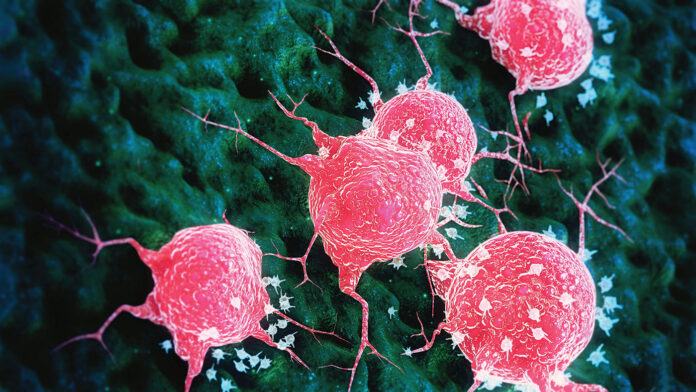
Using bacteria to target tumors presents an exciting and innovative treatment option and could potentially be used when current clinical therapies may not be as effective. Scientists at the Japan Advanced Institute of Science and Technology (JAIST) report they have developed a new method to culture antitumor bacteria using highly porous scaffolds. Their approach not only enhanced the anticancer properties of the bacteria but also improved its safety in animal testing.
The findings are published in the Chemical Engineering Journal.
“Microbial metabolism and function are regulated by ambient microenvironment, yet no functional microporous materials are known to regulate anticancer activity of complex bacterial systems,” the researchers wrote. “Here we show that a simple scaffold-mediated bacterial culture is useful for enhancing the anticancer therapeutic abilities of a microbial consortium designated as AUN and composed of intratumoral bacteria Proteus mirabilis (A-gyo) and purple photosynthetic bacteria Rhodopseudomonas palustris (UN-gyo). Our discovery of the mechanism by which porous scaffolds influence the bacterial activities of AUN will facilitate further designs of artificial scaffold material for effective treatment against drug-resistant, triple-negative breast cancer models.”
The research team had previously isolated a group of bacteria, named A-gyo and UN-gyo from tumors in mice. These bacteria inhabit tumor cells interacting with them, and potentially influencing tumor growth and response to treatment. Together, they form the AUN bacterial consortium, which they believed to be a potential tool for cancer detection because of its ability to target tumors and its safety. However, finding the best way to grow these bacteria was challenging.
To address the challenges of culturing AUN, the researchers explored using specially designed scaffolds. They prepared the microporous scaffold using a biocompatible substance called polydimethylsiloxane (PDMS), combined with titanium dioxide (TiO2). The addition of TiO2 helped create a balance where the bacteria could effectively target tumors but were controlled enough to avoid aggressive bacterial growth leading to unintended infections or immune responses. The scaffolds significantly boosted the bacteria’s anticancer properties, making them more effective.
Next, they evaluated the anticancer efficacy of AUN. To their surprise, the researchers found that AUN cultured with the scaffold exhibited an enhanced ability to kill different types of tumor cells. When tested on mice with breast cancer, treatment with the attenuated AUN bacteria led to improved survival rates.
“We discovered that the strong anticancer response was due to the oncolytic (cancer-killing) properties of AUN itself, with the assistance of various activated immune cells such as T cells, NK cells, and macrophages in the tumor microenvironment,” explained Mikako Miyahara, a doctoral student at JAIST and the lead author on the study.
The improved safety and efficacy of their method brings AUN one step closer to its use in cancer treatment, and the authors of the study expect that this technology will be available for clinical trials within the next 10 years.





